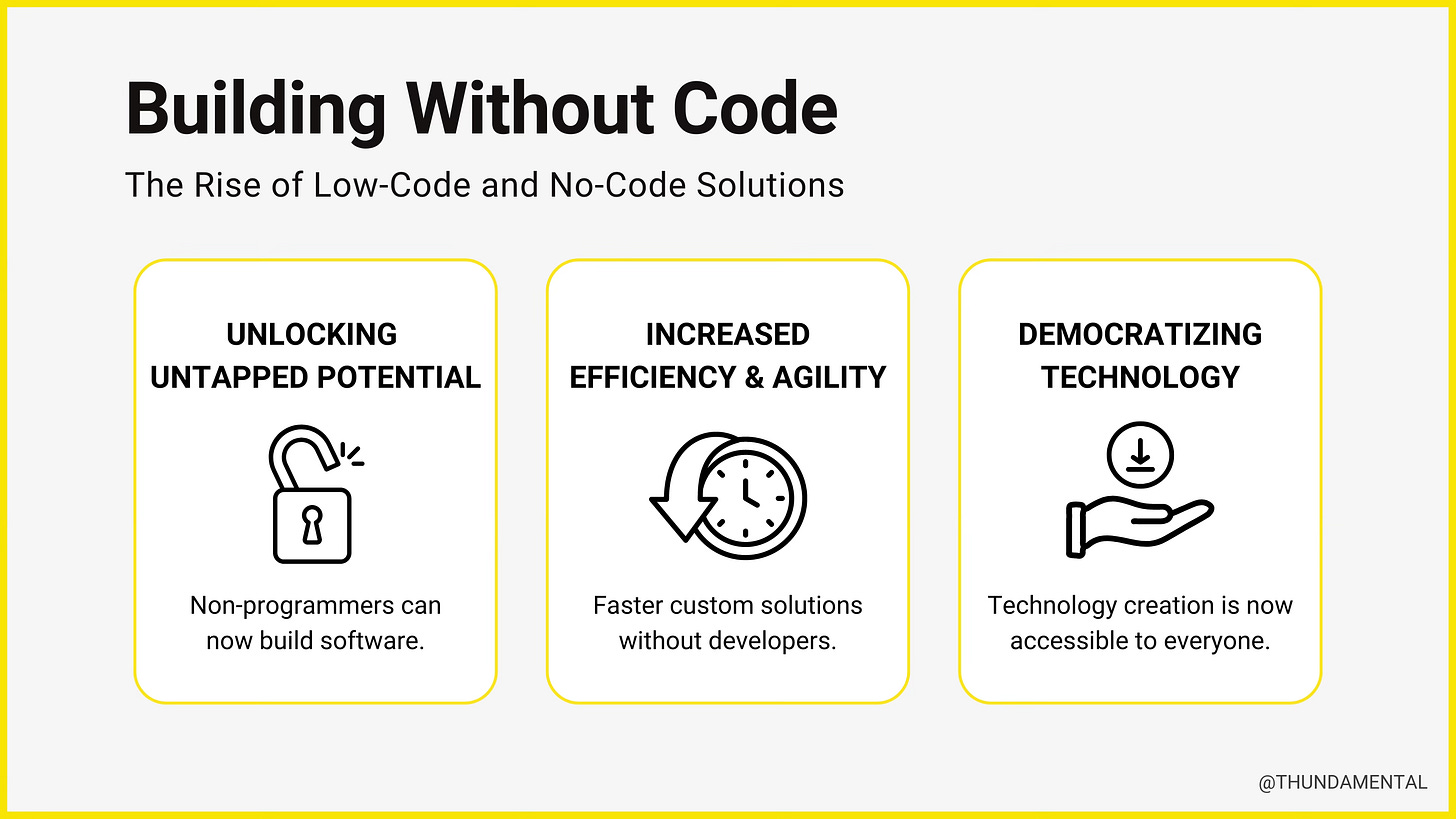Building Without Code: The Rise of Low-Code and No-Code Solutions
Now anyone can build their business ideas
Ever feel like you have a fantastic idea but no way to build it? Or maybe your brilliant business solution is trapped because you don’t know how to code? Well, here’s the good news: thanks to low-code and no-code platforms, you don’t have to be a programmer to turn those ideas into reality.
Charles Lamanna, speaking on the Microsoft WorkLab podcast, sheds some light on how these platforms are democratizing technology, making it more accessible than ever before. And yes, that means you can start building software with a tool that feels more like dragging icons on PowerPoint than slogging through endless lines of code.
Here’s why it matters:
1. Unlocking Untapped Potential
For years, the world of coding has been an exclusive club—only a few with specialized skills could create applications. Low-code and no-code platforms smash through that barrier. Think of them as the secret sauce that allows anyone, even non-programmers, to transform an idea into an actual product.
Got a marketing tool you wish existed? You can build it.
Need an automated workflow? Done.
There are countless innovative ideas waiting to be realized. Now, they don’t have to wait for developers to get to them—they’re at the fingertips of anyone willing to click, drag, and drop.
If you can navigate a PowerPoint presentation, congratulations—you’re already halfway to being a software developer!
2. Increased Efficiency and Agility
Traditionally, if you wanted to build software, you’d need to book some serious time with your IT department or outsource it to a pricey development team. Now? Low-code and no-code platforms allow you to bypass the red tape and roll out custom solutions faster than ever.
Businesses that use these platforms can pivot quickly, responding to new challenges in days rather than months. Imagine being able to automate tedious processes without needing to pester your IT guy for months. It’s like going from waiting in line to cutting right to the front.
3. Democratizing Technology
Low-code and no-code platforms aren’t just a passing trend—they’re part of a larger movement to make technology accessible to everyone. Think of it as the next step in a journey that started with mainframes, continued with personal computers, and exploded with smartphones.
It’s no longer about who has the skills to code; it’s about who has the creativity and the drive to solve problems. With these platforms, you no longer need a Computer Science degree to build something incredible—just a good idea and a bit of curiosity.
Remember when owning a computer made you a ‘techie’? Now owning a low-code platform might just make you the office superhero.
The Power of Low-Code and No-Code
In a world where technology is evolving faster than ever, low-code and no-code platforms are leveling the playing field. They give everyone, from seasoned coders to complete beginners, the tools they need to innovate. This isn't just a trend; it’s the future. So, if you’re ready to bring your next big idea to life, don’t wait around for a developer—start building it yourself.
Because who needs to write 1,000 lines of code when you can just drag and drop your way to success?
Check out this interview withCharles Lamanna from Microsoft on AI’s next big role> Team Player.


